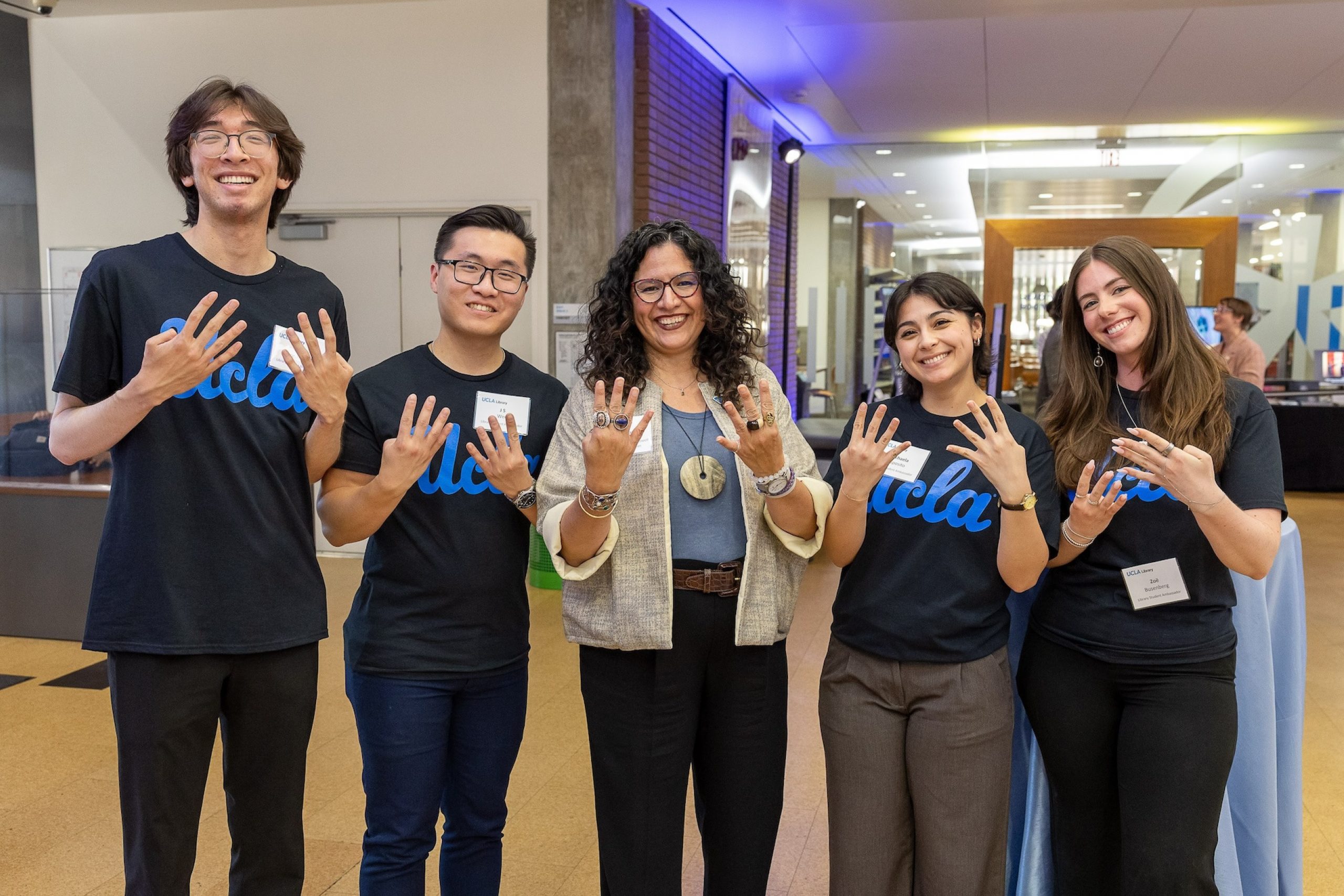More Information
What happens when art and science collide? That was the question a Getty initiative asked Southern California museums and cultural institutions to explore for its 2024 region-wide collaboration, PST ART: Art & Science Collide. At the intersections of art and science, the UCLA Film & Television Archive and UCLA Library Special Collections were among those who contributed to the legacy of research and knowledge produced at what is considered the most expansive arts event in the world.
Spanning across the region with more than 70 participating organizations, the Getty initiative explored topics like ancient cosmologies, Indigenous sci-fi, environmental justice and artificial intelligence, providing thought-provoking lenses for the public to explore the complexities of the world.
UCLA was the single largest granted institution for PST ART: Art & Science Collide, with nearly $2 million in support from the Getty Foundation to conduct and share research and activate exhibitions and public programs.
Four years prior to the public kick-off, the UCLA Film & Television Archive received one of six grants that were awarded to UCLA(opens in a new tab) by the Getty Foundation to begin researching, organizing and programming Science Fiction Against the Margins, a showcase for work by independent and international filmmakers who have challenged and subverted the conventions of the sci-fi genre. Presented in partnership with UCLA Cinema & Media Studies in the School of Theater, Film and Television, the series brought nearly 40 film and television titles, representing 21 countries, to the big screen, paired with introductions by and conversations with 13 filmmakers.
“Movies and sci-fi are meant to be,” said multimedia artist and UCLA Professor Cauleen Smith, who spoke about Afrofuturism at the opening night of Science Fiction Against the Margins(opens in a new tab) (Oct. 4–Dec. 14, 2024). “So much of [...] thinking about galactic, cosmological ideas has to do with time, and cinema handles time like nothing else.”

In an evening exploring “Dystopian Futures,” filmmaker Danis Goulet explained that the sci-fi genre “opened up all of this freedom and possibility to talk about the things that we need to talk about, and to do it really loudly [...] there’s something about being freed up from [...] total reality.” Danis used sci-fi in her film Night Raiders (2021) to examine “what Indigenous people have had to bear on the back of the founding of Canada and the U.S.”
The conversations with Goulet, Smith and other guest filmmakers are viewable on the Archive’s YouTube channel(opens in a new tab).
With support from the Getty Foundation, the series co-curators edited a companion book, Science Fiction Against the Margins: Cinematic Futures, Global Imaginaries(opens in a new tab), which was published by the UCLA Chicano Studies Research Center and University of Washington Press. Edited by UCLA Distinguished Professor Chon Noriega, Archive Research and Study Center Officer Maya Montañez Smukler and Archive Programming Coordinator Nicole Ucedo, the book features essays by 15 scholars and filmmakers, including eight UCLA faculty, which examine nontraditional sci-fi films for their potential to theorize social change.
UCLA Library Special Collections helped illuminate the histories of art and science, enriching exhibitions across Los Angeles by loaning unique archival materials to five institutions participating in PST ART. With every loan, the Library Preservation & Conservation Department, in coordination with Special Collections, provides expert care in examining, preparing and ensuring the safe transport of the one-of-a-kind materials.
“UCLA Library materials are brought into new relationships with all kinds of cultural and art objects when we loan them out for exhibitions like PST ART,” said Chela Metzger, head of Preservation & Conservation. “The process of exhibition loans facilitates new discovery and scholarship, as well as new visual relationships across disciplines and across time.”
At the Getty Center’s Lumen: The Art and Science of Light(opens in a new tab), the Library’s loan of De revolutionibus orbium coelestium (On the revolutions of the heavenly spheres) (1543) helped illustrate the ways in which the science of light was studied during the “long Middle Ages” (800-1600 C.E.). Written by Renaissance astronomer Nicolaus Copernicus, the book challenged commonly held beliefs about the universe by proposing that the Sun was the center and the Earth moved as one of the planets.
Across town, Sci-fi, Magick, Queer L.A.: Sexual Science and the Imagi-Nation(opens in a new tab) (ONE Archives at the USC Libraries) included previously unexhibited photocollages from UCLA’s Renate Druks collection(opens in a new tab). A surrealist artist, Druks was immersed in the Hollywood occult and underground queer filmmaking scenes of the 1940s and beyond.
Library loans also helped tell the cross-cultural, centuries-spanning stories of Mapping the Infinite: Cosmologies Across Cultures(opens in a new tab) (LACMA), Crossing Over: Art and Science at Caltech, 1920–2020(opens in a new tab) (Caltech) and Out of Site: Survey Science and the Hidden West(opens in a new tab) (Autry Museum).


